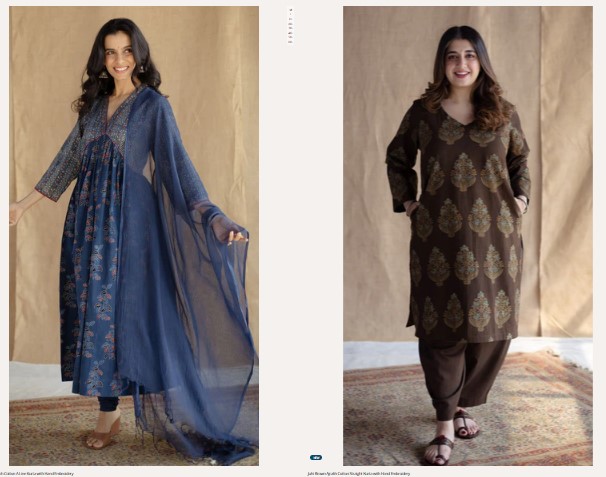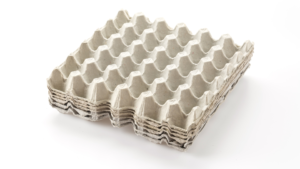Craft Meets Couture: The Making of a Linen Tissue Saree
In the ever-evolving world of fashion, the revival of handloom fabrics has brought with it a quiet revolution—a return to roots, craftsmanship, and a celebration of culture. Among the many handwoven marvels gaining global attention, the linen tissue saree stands as a testament to how traditional craft can seamlessly meet modern couture.
This saree isn’t just a garment—it’s a canvas of artistry, a product of skilled hands, heritage techniques, and a vision that marries comfort with couture. From the looms of rural India to the ramps of high-end fashion shows, the journey of a linen tissue saree is a story worth telling.
What is a Linen Tissue Saree?
A linen tissue saree is a contemporary drape that combines two luxurious fabrics: linen and tissue. Linen, known for its breathable, crisp texture, lends the saree a structured fall, while the metallic shimmer of tissue threads introduces a festive gleam.
This combination results in a fabric that is lightweight yet regal, understated yet elegant. Perfect for weddings, intimate events, or even formal office gatherings, the linen tissue saree has carved a niche for itself among saree connoisseurs and fashion-forward millennials alike.
The Roots of Linen in India
Linen, made from the flax plant, is one of the oldest known textiles in human history. Though its origins trace back to Egypt and Mesopotamia, India embraced linen weaving centuries ago. Today, Indian weavers have honed their techniques to blend linen with various other threads, including zari (metallic thread), silk, cotton, and tissue, giving rise to hybrid fabrics like the linen tissue.
What sets Indian linen apart is the handwoven artistry—the use of pit looms or frame looms to create each yard of fabric with precision. These weaves are not just environmentally conscious but carry a heritage lineage, often passed down through generations of artisans.
The Lustrous Appeal of Tissue Weaving
Tissue fabrics are woven with gold or silver zari threads, giving them a distinctive sheen. Originally a staple of Mughal and Banarasi textiles, tissue was once the fabric of royalty. When fused with linen, the result is an ethereal shimmer, perfect for those who seek a refined touch of glamour.
The shine of tissue is subtle—it’s not loud or overpowering. That’s why pairing it with the matte elegance of linen creates a visual harmony that designers and wearers adore.
The Craft Behind the Saree: A Step-by-Step Journey
Let’s walk through the fascinating process of creating a linen tissue saree—from the concept stage to the final masterpiece draped over a shoulder.
1. Ideation and Design
Every saree begins as an idea. Designers sketch motifs, borders, and pallus inspired by nature, architecture, or even contemporary art. In the case of linen tissue sarees, minimalist motifs, metallic stripes, and geometric accents are often preferred to let the fabric’s texture shine.
Designers also decide on:
Color palette
Placement of zari
Blouse pairing
Weight and weave density
2. Yarn Selection and Dyeing
Next comes the selection of yarns. Pure linen threads are chosen for their quality—usually 60 to 100 counts for fineness. The tissue threads are generally zari-based, made from a blend of silk or polyester with a metallic finish.
Natural or azo-free dyes are used to color the linen. This process ensures that the saree remains skin-friendly and eco-conscious. The dyed yarn is then dried naturally before weaving.
3. Setting the Loom
Weaving a linen tissue saree is no ordinary task. The loom setup can take several hours to a few days. The warp (longitudinal yarn) and weft (transverse yarn) are arranged according to the design.
For a tissue saree, zari threads are interwoven with linen either in the warp or weft—or both—depending on how much shimmer is desired. Skilled artisans make sure that the metallic threads don’t overpower the linen, achieving just the right balance.
4. Weaving Magic
This is where the magic happens. On the loom, the artisan begins the rhythmic dance of weaving, inserting weft threads over and under the warp. Depending on the design complexity, it can take anywhere from 2 days to a week to weave a single saree.
Weavers often include:
Contrasting borders
Light gold or silver pallu
Tassels or fringe details
Checks, stripes, or woven motifs
The beauty of handwoven linen tissue sarees lies in their imperfections—the little irregularities that are the signature of a human hand at work.
5. Finishing and Detailing
Once the weaving is done, the saree is washed, starched, and pressed to bring out its true form. Some sarees undergo softening processes to make them more comfortable for day-long wear.
The final detailing includes:
Attaching tassels
Hand-rolling or hemming the edges
Quality checks for weave consistency
At this point, the saree is ready to grace wardrobes and runways.
Why Linen Tissue Sarees Are a Couture Favorite
With the growing popularity of sustainable fashion, the linen tissue saree has emerged as a couture staple that doesn’t compromise on style or ethics. Here’s why:
1. Modern Appeal, Traditional Soul
While the roots of this saree lie in Indian craftsmanship, its structured drape and minimalist sheen appeal to modern tastes. You can style it with:
- A crop top blouse
- A belt for a fusion look
- Statement earrings and sleek buns
2. Seasonless Elegance
Linen is cool in summer and layered-friendly in winter. The tissue element adds festive charm, making the saree versatile for both casual and celebratory wear.
3. Power Dressing Redefined
Women today seek fashion that reflects their personality. Linen tissue sarees strike the right note—powerful yet soft, bold yet classic, minimal yet expressive.
4. Slow Fashion Icon
Each piece is handcrafted, which naturally limits mass production. Owning a linen tissue saree is about embracing slow fashion, where quality, story, and heritage matter more than fast trends.
Styling Tips: Making the Linen Tissue Saree Your Own
Here are some chic ways to style your linen tissue saree:
For Formal Occasions:
Pair a beige-gold saree with a sleeveless silk blouse
Add a Kundan necklace and juttis
Go for a sleek bun and nude makeup
For Office or Meetings:
Choose muted shades like charcoal, ivory, or rust
Team with a cotton blouse and leather tote
Minimal jewellery and mules
For Celebrations:
- Pick a rose-gold or silver tissue variant
- Wear with a designer blouse and layered bangles
- Add a statement clutch and stilettos
Linen tissue sarees are like a blank canvas—the styling possibilities are endless.
From Weavers to the World: The Impact Beyond Fashion
Every linen tissue saree tells the story of a weaver, a community, and a craft. By investing in one, you support:
Artisan livelihoods
Sustainable weaving practices
Preservation of textile heritage
Many brands now collaborate directly with weavers, ensuring fair wages, better tools, and visibility in global markets. Owning one of these sarees becomes not just a fashion choice, but a socially responsible act.
In Conclusion: A Legacy You Can Wear
The linen tissue saree is more than a fashionable drape—it’s heritage spun into elegance, craft woven into style, and comfort elevated to couture.
Whether you’re a bride looking for something unique, a working professional who appreciates minimal glam, or a saree lover rediscovering your roots, the linen tissue saree is a garment that speaks your language.
It invites you to slow down, admire the threads, and wear a story.
So the next time you see a linen tissue saree glinting under soft lights, know that it carries within it the rhythm of looms, the soul of a craft, and the spirit of couture.













